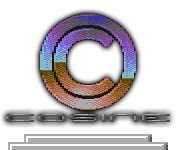 |
|
Cosine is, for the main, a demo crew. For the last thirty-three years, on and off, we have been producing demonstrations for various platforms with the Commodore 64 being a major focus. It was started by two members, Skywave (Marc) and Hookie (Nia), and produced, amongst other things, demos. Around the time T.M.R (Jason) and Odie (Sean) joined, the team had started looking at other options such as game production. In 1988 Sonix Systems, the Cosine music division, was formed to produce game and demo music first with off-the-shelf utilities like Ubik's Music and Future Composer v2.1 and later with Odie's Electronic Music System. Up until 1989, Cosine were producing demos at a respectable rate until Hookie left and the other members started to become disenchanted with the C64; the new piece of kit from Commodore, the Amiga, was the machine to be seen with and most of the members brought or gained access to one. However, the name never died and most of the members still considered themselves to be in Cosine, just inactive (this is normal for us, very few people actually leave and the ones that do normally seem to come back again!). Then came 1993; T.M.R had been working on a demo and, along with Chancer (Paul), decided to finish it off and release it once and for all. Lethargy became the first Cosine demo in several years and, it seemed at the time, that it may possibly be the last; there was very little feedback (at least to us, the demo managed to get just about everywhere but we didn't realise until much later) and the members lost a just a little faith in the C64 scene. So much so that the world was not to see another product until 1995, when Chancer was heading out to the X-95 party and T.M.R hammered out Contraflow to be entered into the demo competition there. That demo was a bit of a rush job, written in a very short space of time and finished at three in the morning on the day it had to be posted, but although flawed it was still reasonably respectable and managed to get third place. The internet became a new Cosine playground in 1996 when the first generation of this website was launched on a largely unsuspecting public. This is now version 6, featuring graphics and what passes for design by T.M.R. The "release schedule" is still hastily scribbled down on a piece of scrap paper to subsequently be ignored, releases still come in "waves" and the focus has primarily been on games development since 2007 but, whilst it might not always look like anything is actually happening at Cosine HQ, things are usually moving along behind the scenes. The phrase "release schedule" is one that the members never quite seemed to get the grasp of; if a product can be finished five minutes before it has to go out, it will normally be completed two minutes before! We've released demos at parties all over the world (at which we never seem to have a representative) as well as a series of games and the odd utility, have been heavily involved with the production of the popular magazine Commodore Zone, released games through Cronosoft, RGCD or Psytronik and making the odd appearance on Tricia (okay, that was a bit of a fib but we'd probably not be much worse than most of the people on that show!). So why code demos or games for an ancient machine? The main reasons for writing for these platforms would be the challenge of producing something impressive; there's no "moving goalposts" to the hardware like more recent computer hardware so, instead of the "throw more power at the job" attitude that developers on those platforms have, 8- and 16-bit coders have to figure out better ways to write their programs to get around the hardware limitations. If a screen scroller takes too much processor time, what can be optimised off to make it more efficient? If the disk drive is too slow, can it be sped up without losing anything else? If the palette is too limiting, can more colours be faked or PAL blended? 8- and 16-bit programmers work minor (and sometimes, not so minor) miracles to get their machine doing a vast amount of things that appear to be well beyond it's design specifications. And that means that coding these machines can, if you understand it, be fun; in the same way that pot-holers (spelunkers) will sometimes disappear for hours on end into complex cave systems and re-emerge with a map for no readily apparent reason apart from the fact they want to do it, coders will sit down with a glitch they have noticed in one of the video registers and attempt to find out if anything fun or even useful can be gained from it. |
| Content copyright © 1996-2021 Cosine Systems |
